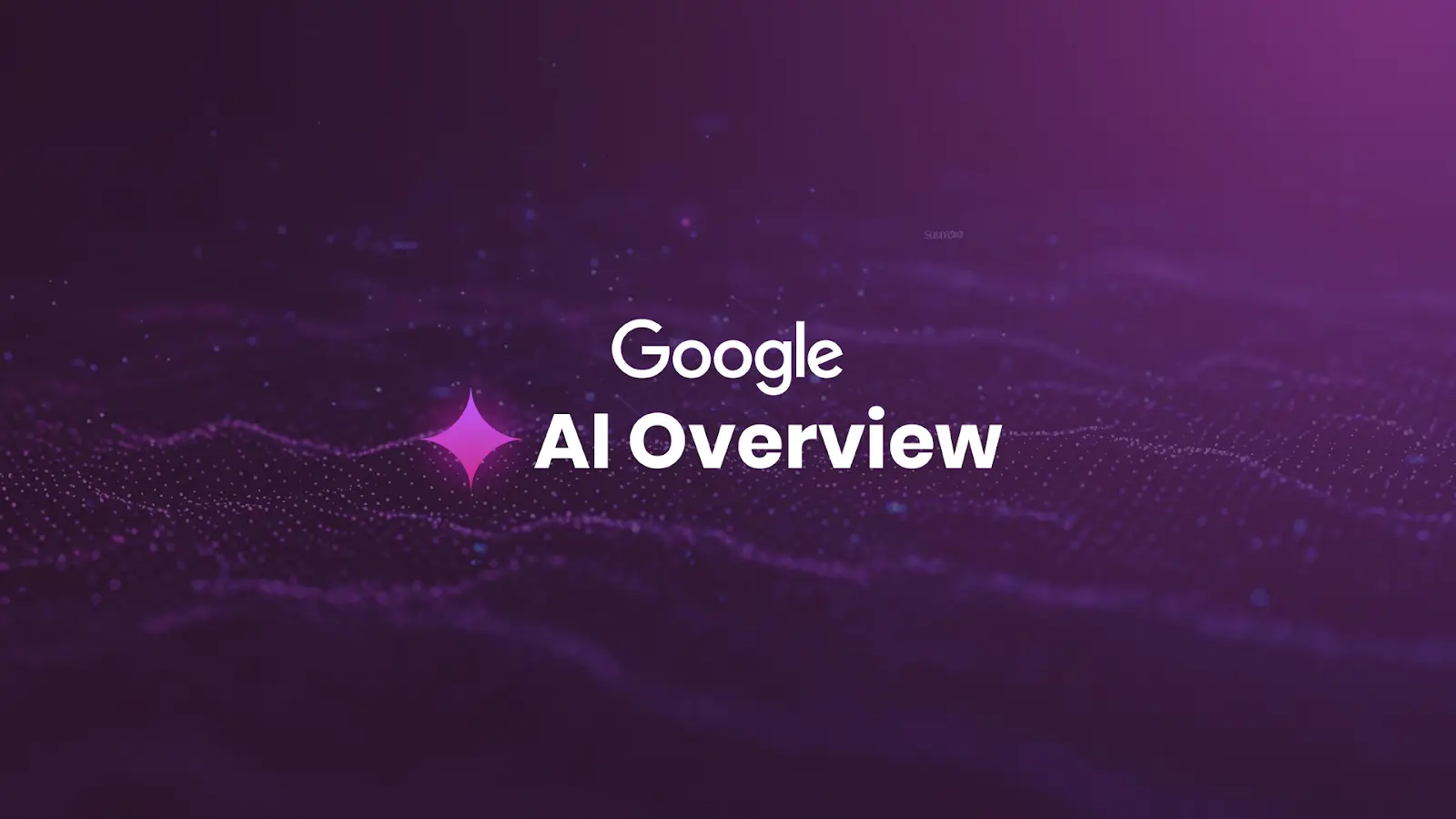The GEO Checklist: 8 Essential Steps to Optimise for AI Assistants
Think your SEO is finished? Think again. A new wave of digital gatekeepers called AI assistants are now summarising the web, and your perfectly-optimised page might be getting left out of the conversation. It's time to learn a new playbook. Welcome to the era of Generative Engine Optimisation.
What This Blog Will Cover
In this post, you'll get a straightforward, eight-step checklist to make your content a favourite source for AI tools like ChatGPT and Google AI Overviews. We'll show you how to:
- Structure your writing for maximum scannability.
- Speak the language of conversational queries.
- Build trust signals that AI models recognise and reward.
- Organise your site to become a top authority.
- Keep your content sharp, current, and AI-ready.
Let's dive in and future-proof your content strategy.
So, What's GEO?
You've polished your SEO, climbed the search rankings, and celebrate each #1 spot on Google. But have you stopped to consider who, or what, is actually reading your content?
A new type of user is now a primary gateway to your information: the AI assistant. Tools like ChatGPT, Gemini, Claude, and the ever-present Google AI Overviews are synthesising your hard work into concise answers for millions. If your content isn't structured for these digital curators, you become invisible, no matter your search engine rank.
This is where GEO comes in.
GEO, or Generative Engine Optimisation, is the practice of structuring your content to be easily found, understood, and confidently cited by AI language models. It's about speaking the assistant's language, ensuring your expertise becomes the go-to source for the answers they provide.
Ready to make your content indispensable to the next wave of search? Here are eight essential steps to GEO your website.
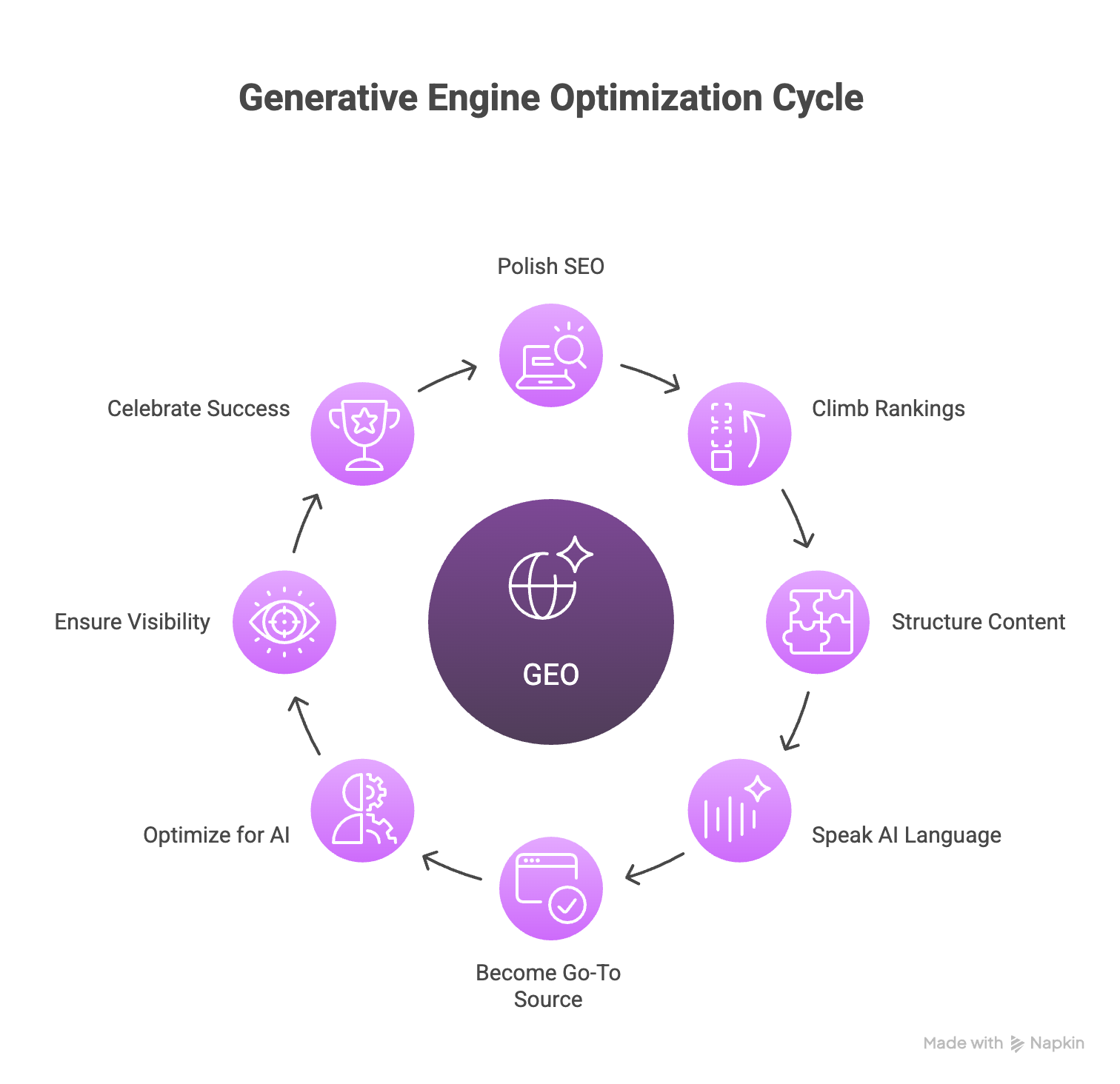
-
Write Content for the Human Skimmer (and the AI Scanner)
People read online content differently than a novel. They scan. AI assistants operate similarly; they parse content to identify core ideas and supporting details quickly. Dense, unbroken paragraphs are difficult for both.
To make your content effortlessly scannable:
- Use descriptive subheadings (H2s, H3s) frequently. Think of them as signposts for the main ideas in each section.
- Keep paragraphs short and focused. Aim for one to three sentences. This creates visual breathing room and isolates distinct thoughts.
- Leverage bulleted lists and numbered steps. These are clear signals for "here is a collection of related items" or "here is a process."
- Bold key terms and definitions. This highlights important concepts for the reader and emphasises essential data points for the AI.
When your content is easy to scan, it becomes easy for an AI to summarise accurately.
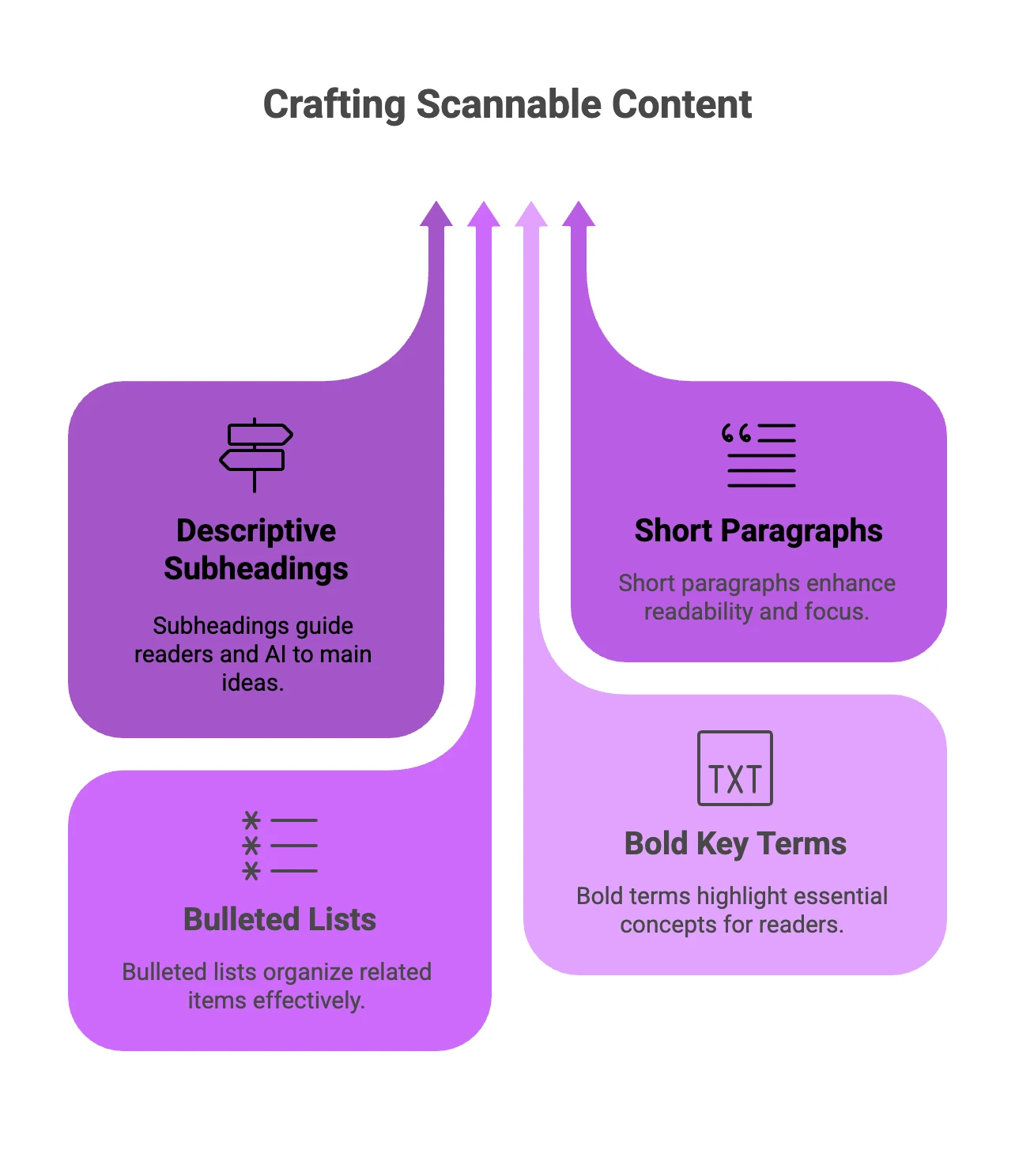
-
Answer the Questions People Actually Ask
Traditional SEO focuses on single keywords. GEO requires a shift in perspective. People use conversational, full-sentence queries with AI assistants. They ask, "how do I fix a leaky faucet?" instead of searching "leaky faucet repair."
Your content must mirror this question-and-answer format.
- Identify the core questions your article or product page resolves.
- Use these questions as subheadings. For example, "What is the fastest way to soothe a sunburn?" or "Which project management tool works best for small teams?"
- Provide a direct, clear answer immediately following the question. This creates a perfect, self-contained data block for an AI to extract and present.
By structuring your content around real-world queries, you align perfectly with how people use AI tools.
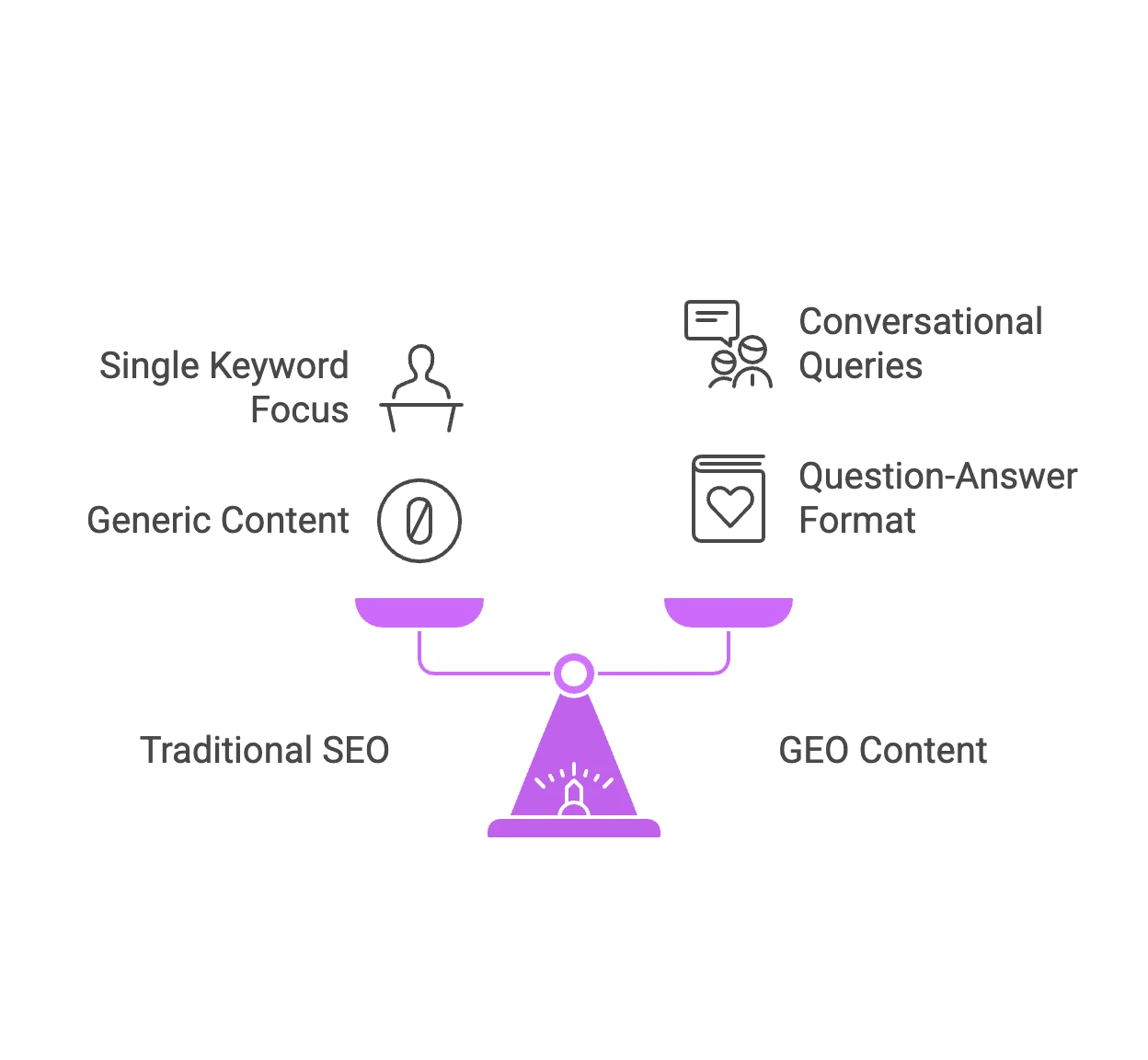
-
Structure Data for Easy Digestion
Consider an AI assistant as a busy researcher gathering information. A well-organised filing system is a godsend. You can build this system directly into your content using clear, standardised blocks.
Integrate these elements to make your information AI-friendly:
- A clear, concise definition at the start of an article, explaining the topic in a single sentence.
- A summary or TL;DR (Too Long; Didn't Read) box at the top of long-form content, offering the key takeaways.
- Data tables to compare features, specifications, or options.
- Simple numbered lists for step-by-step guides and bulleted lists for features or items.
These structures act as high-value information packets, making it simple for an AI to pull a precise answer without having to interpret a long paragraph.
-
Connect Ideas, Not Just Keywords
AI models understand context and relationships between ideas. They think in concepts, not just in strings of words. Optimising for "semantic relevance" means covering a topic completely, using the full range of vocabulary a real expert would use.
Instead of repeating a primary keyword like "best running shoes," your content should naturally incorporate related ideas:
- Cushioning technologies (e.g., gel, air, foam)
- Types of support (e.g., stability, neutral, motion control)
- Running surfaces (e.g., road, trail, track)
- Anatomy and biomechanics (e.g., arch type, pronation, stride)
By writing comprehensively about a subject and using this related vocabulary, you demonstrate deep knowledge. This signals to the AI that your content is a rich, authoritative source on the topic.

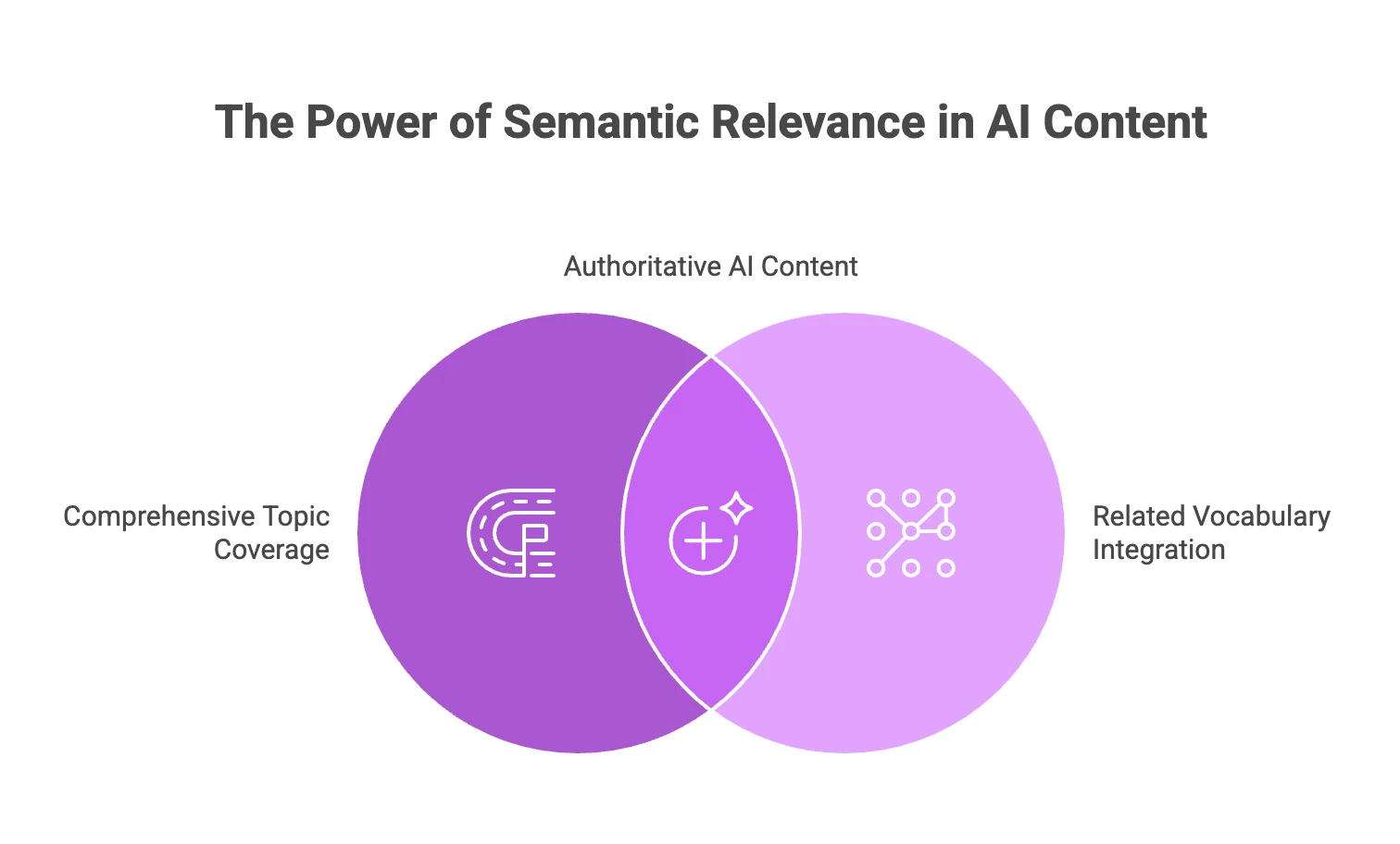
-
Prove Your Content is Trustworthy
AI assistants are programmed to prioritise reliable, trustworthy information. They assess the credibility of their sources. This is where the concept of E-E-A-T or Experience, Expertise, Authoritativeness, and Trustworthiness becomes critical.
You must actively demonstrate these qualities on your site:
- Showcase Author Credentials: Include author bios that highlight their specific experience and qualifications in the field.
- Cite Reputable Sources: Link out to established institutions, academic studies, and recognised industry leaders. This builds a web of trust.
- Display Client Logos and Testimonials: Social proof from reputable brands or individuals adds immense credibility.
- Use Clear, Factual Language: Avoid exaggerated claims and hyperbole. Present information in a balanced, evidence-based manner.
An AI is more likely to reference a source that clearly proves its trustworthiness.
-
Become the Go-To Source on a Topic
A single well-ranking article is good. A comprehensive library of interlinked content on a central theme is powerful. AI models map content relationships and learn to recognise websites with deep "topical authority."
Build your authority by creating a network of content, or "content clusters."
- Start with a central, pillar page that provides a broad overview of a core topic (e.g., "A Beginner's Guide to Sourdough Baking").
- Create multiple specific, child articles that delve into subtopics (e.g., "What is Sourdough Hydration?," "Fixing Common Sourdough Mistakes," "The Best Flour for Sourdough Starters").
- Interlink these articles thoroughly. Connect your pillar page to your child articles, and link related child articles to one another.
This structure signals to AI that your site is a definitive resource, making it a preferred source for a wide range of questions within your niche.
-
Maintain the Accuracy of Your Information
The digital world and its impact on digital marketing efforts changes fast. A fact that was true two years ago might be outdated today. AI assistants have a strong preference for current, up-to-date information, especially in fast-moving fields like technology, health, and finance.
Treat your high-performing content as a living asset, not a one-time publication.
- Audit top-performing posts quarterly to check for outdated information, broken links, or new developments.
- Add a "Last Updated" date prominently at the top of your articles. This is a strong signal of freshness.
- Revise and republish older articles with new data, images, and insights. This can give them a new lease on life in search results and AI responses.
Fresh content is accurate content, and accuracy is the currency of trust for both users and AI.
-
Write for a Person, Polish for an AI
This is the golden rule of GEO. Your primary audience is, and always will be, human beings. If your content becomes robotic or sterile in an attempt to "game" the AI, you will lose the human reader, and the AI will notice the lack of genuine engagement.
Write with passion, clarity, and a genuine desire to help your reader. Then, use the steps above to polish and structure that excellent human-centric content, making it effortless for AI to share your expertise with the world. By doing so, you future-proof your content and position your brand at the forefront of this new digital frontier.
Get Cited, Not Silenced. We'll Make Your Content AI-Indispensable
Following these eight GEO steps is your blueprint for visibility in the age of AI-driven search. But implementing them effectively requires strategic content creation and a deep understanding of how AI models evaluate and prioritise information. This is where the future of search is headed, and at USEO, the top SEO Dubai agency, we're already there.
As a leading digital marketing agency in Dubai, our AI SEO services future-proof your online presence, ensuring your content is not just found by people, but trusted and cited by the AI assistants they rely on. Ready to make your brand an authority in the eyes of both your audience and the algorithms? Let's talk about building a GEO-optimised strategy for you.
FAQs
How is GEO different from traditional SEO?
While traditional SEO typically focuses on ranking for specific keywords in a search engine, GEO focuses on providing the best possible answer that an AI can directly quote or summarise. It's less about the ranking position and more about becoming the source material for the AI's response.
My website already ranks high on Google. Do I still need GEO?
Absolutely. A high ranking doesn't guarantee your content will be chosen by an AI. An AI might bypass a #1 ranked page if it's poorly structured or lacks clear answers, pulling information from a lower-ranked, but better-structured source instead.
How long does it take to see results from GEO?
Like SEO, GEO is a long-term strategy. You might see some changes in how your content is featured in AI overviews within a few weeks, but building topical authority and strong E-E-A-T signals is a continuous process that compounds over months.
Should I create content specifically for AI assistants?
Your goal should be to create exceptional content for your audience, structured in a way that AI can use. Don't create content only for AI. When brainstorming new topics, consider the questions your audience is asking these tools and create the definitive answer on your site.
Does GEO mean I should stop using keywords entirely?
No. Keywords are still important for discovery. However, GEO shifts the focus from keyword density to topic coverage. You should use a full range of related terms and concepts (semantic relevance) to show you are a comprehensive resource.








 6 min read
6 min read

